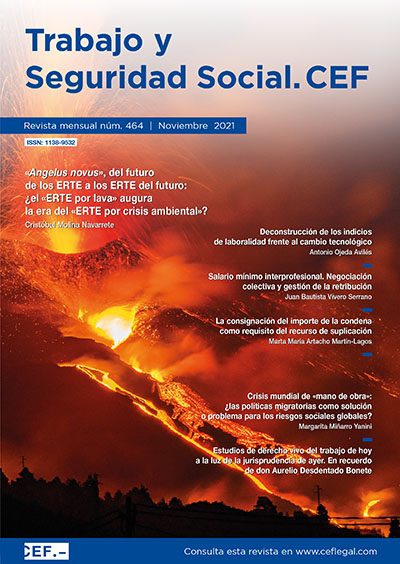Regulación de empleo y extinciones computables: el despido colectivo de facto, feliz concepto en continua expansión
Con ocasión de la Sentencia del Tribunal Supremo 933/2021, de 23 de septiembre
DOI:
https://doi.org/10.51302/rtss.2021.2502Palabras clave:
despido colectivo de facto, buena fe, periodo de prueba, derecho vivo, orden público laboralResumen
La reforma laboral de 2012-2014 quiso reconocer a las empresas mayor flexibilidad de gestión de las causas habilitadoras de despidos colectivos, incluyendo el fin de la autorización administrativa. Sin embargo, no menos claro quedaba que el procedimiento de consulta no era disponible para la empresa, eludiéndolo a través de fragmentar y diversificar despidos y extinciones. La construcción del despido colectivo de hecho fue una creación jurisprudencial para garantizar que despidos materialmente colectivos, pero formalmente individuales o plurales, se canalicen por la vía del artículo 51 del Estatuto de los Trabajadores (ET). Esta construcción de derecho vivo ha ido creciendo con el tiempo y hoy conoce una gran vis atractiva. Como acaba de confirmar el Tribunal Supremo, también los ceses por no superación de los periodos de prueba ex artículo 14 del ET, aunque no conste la causa, pueden considerarse ceses incluidos en el cómputo para el umbral del artículo 51 del ET. Una vez más, la realidad y la buena fe, con prohibición del ejercicio antisocial del derecho del artículo 7 del Código Civil, se imponen al formalismo y a la libertad de decisión empresarial, en aras del orden público-económico laboral.


















